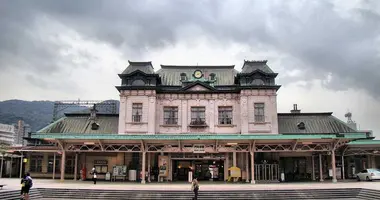Kokura: A historic castle town in the heart of Kitakyushu, Japan
- Published on : 19/05/2024
- by : Japan Experience
- Youtube

Nestled in the heart of Kitakyushu, Kokura is an ancient castle town with a rich history dating back to the Edo period. This charming city, located in Fukuoka Prefecture, is the center of Kitakyushu and boasts Kokura Castle as its main attraction. Built in the early 17th century, the castle has connections to famous historical figures like Miyamoto Musashi. Interestingly, Kokura was the primary target for the atomic bomb in WWII but was spared due to morning fog, a twist of fate that forever changed its destiny.
History of Kokura from the Edo period to modern times
Kokura's history is a tapestry woven with threads of samurai culture, feudal rule, and modernization. During the Edo period (1603-1868), the Ogasawara and Hosokawa clans held sway over Kokura Castle, with the legendary swordsman Miyamoto Musashi briefly residing there in 1634. As Japan transitioned into the Meiji era (1868-1912), Kokura became the seat of government for the short-lived Kokura Prefecture before merging with Fukuoka Prefecture.
The 20th century brought both prosperity and peril to Kokura. The city flourished as an industrial hub, with its strategic location making it a key player in Japan's modernization. However, the specter of World War II loomed large, and Kokura's military importance nearly sealed its fate as the target for the atomic bomb. Miraculously spared, Kokura emerged from the war to become an integral part of the newly formed Kitakyushu in 1963, propelling itself into the future while honoring its storied past.
Kokura Castle: The symbol of the town's samurai heritage
Standing tall amidst the urban landscape, Kokura Castle is a testament to the town's samurai heritage. Constructed in 1602 by Hosokawa Tadaoki, the castle was completed six years later and served as a bastion of power for the ruling clans. Though the original structure was destroyed by fire in 1837, the castle was partially rebuilt in 1839 and fully restored to its former glory in 1959.
Visitors to Kokura Castle can experience a slice of samurai life by exploring the castle's well-preserved interiors, which house a modern museum showcasing the town's rich history. From the top floor, breathtaking panoramic views of Kitakyushu unfold, offering a glimpse into the castle's strategic importance. The castle grounds also feature a serene Japanese garden, a picturesque spot for a leisurely stroll and quiet contemplation.
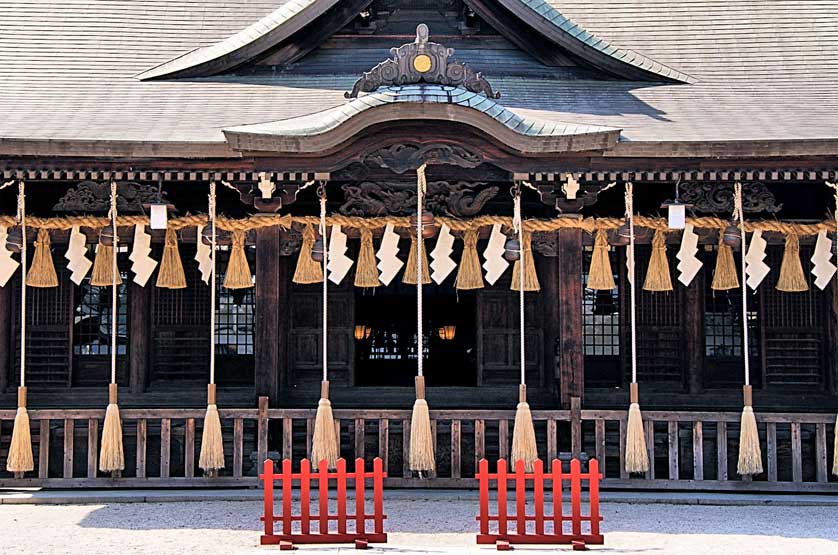
Kokura's Yasaka Jinja, Kitakyushu, Kyushu
Notable residents and figures born in Kokura
Kokura has been home to a host of remarkable individuals who have left an indelible mark on Japanese culture and history. Perhaps the most famous resident was Miyamoto Musashi, the legendary swordsman who briefly lived in Kokura Castle under the patronage of the Ogasawara and Hosokawa clans in 1634. The castle town also nurtured literary giants like Matsumoto Seichō and Mori Ōgai, with the latter basing himself in Kokura for a few years in 1899.
In more recent times, Kokura has given birth to a diverse array of talented individuals, including mangaka Tsukasa Hojo and Leiji Matsumoto, singer and J-pop idol Linda Yamamoto, and even the notorious yakuza godfather Satoru Nomura. These notable figures, each in their own unique way, have contributed to the rich tapestry of Kokura's cultural legacy.
Kokura's role in World War II as the original target for the atomic bomb
In a twist of fate that forever altered the course of history, Kokura was originally designated as the primary target for the "Fat Man" atomic bomb on August 9, 1945. The city's military importance, particularly its large arsenal manufacturing chemical and conventional weapons, made it a strategic choice. However, on the fateful morning of the raid, Kokura was obscured by dense fog and smoke from nearby bombing raids, making visual identification of the target impossible.
After three unsuccessful attempts to locate Kokura, the B-29 bomber "Bockscar" diverted to its secondary target, Nagasaki. The atomic bomb was dropped on Nagasaki at 11:02 a.m., devastating the city and claiming tens of thousands of lives. Kokura, by a twist of fate and meteorological conditions, was spared the horrific destruction that befell Nagasaki. This near-miss has become an integral part of Kokura's wartime narrative, a sobering reminder of the capricious nature of history and the enduring impact of the atomic bomb.
Riverwalk Kitakyushu: A modern entertainment and shopping complex near the castle
Just a stone's throw from the historic Kokura Castle lies Riverwalk Kitakyushu, a modern shopping and entertainment complex that seamlessly blends the city's past and present. Designed by the renowned Jon Jerde architectural team, who also created Canal City in Fukuoka, Riverwalk Kitakyushu is a vibrant hub of activity.
Visitors can indulge in retail therapy at the numerous shops, savor delectable cuisines at the food court, catch the latest blockbusters at the multiplex cinema, or immerse themselves in the arts at the Kitakyushu Performing Arts Center and the Kitakyushu Municipal Museum of Art branch. The complex's open-air design and riverside location create a welcoming atmosphere, inviting visitors to unwind and soak in the charms of modern Kokura.
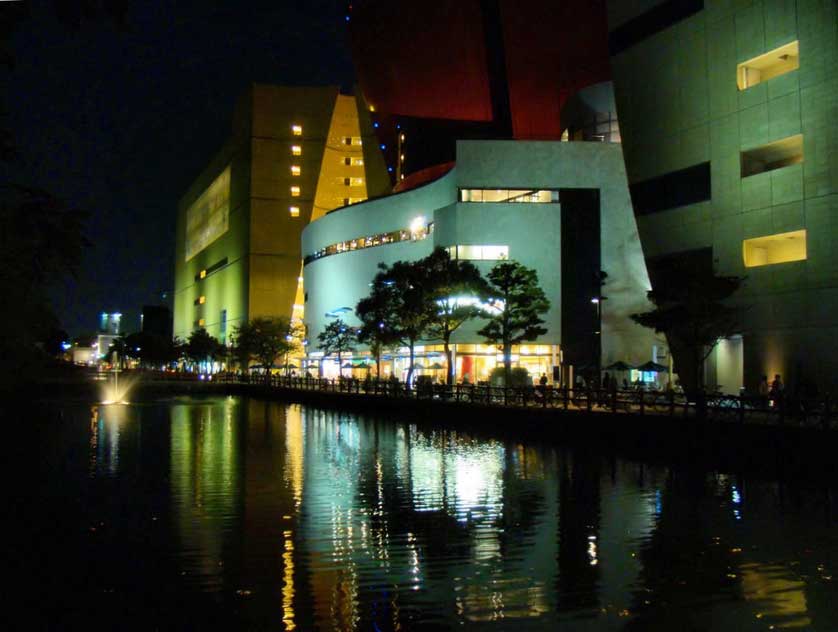
The Riverwalk Kitakyushu in Kokura by Jon Jerde
Visiting Kokura: How to get there and what to see
Kokura is easily accessible by train, with Kokura Station serving as the main gateway to the city. The station is a stop on the Sanyo Shinkansen line, connecting Kokura to major cities like Tokyo, Nagoya, and Osaka. The Kyushu Shinkansen also links Kokura to Kumamoto and Kagoshima.
Once in Kokura, visitors can embark on a historical and cultural odyssey. The main attractions revolve around Kokura Castle and its surrounding park, offering a glimpse into the town's samurai past. The nearby Yasaka Jinja, a branch of the famous shrine in Gion, Kyoto, is also worth a visit. For a taste of modern Kokura, head to Riverwalk Kitakyushu to shop, dine, and entertain yourself. Architecture enthusiasts can seek out buildings designed by renowned architects like Kenzo Tange and Arata Isozaki, while theme park lovers can enjoy a day at Space World.
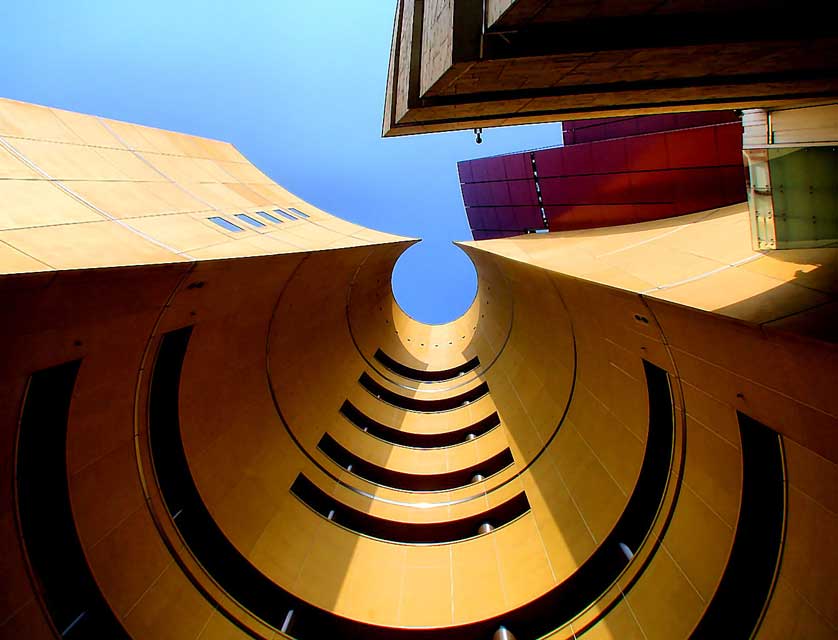
Riverwalk Kitakyushu, Kokura, Kitakyushu, Kyushu
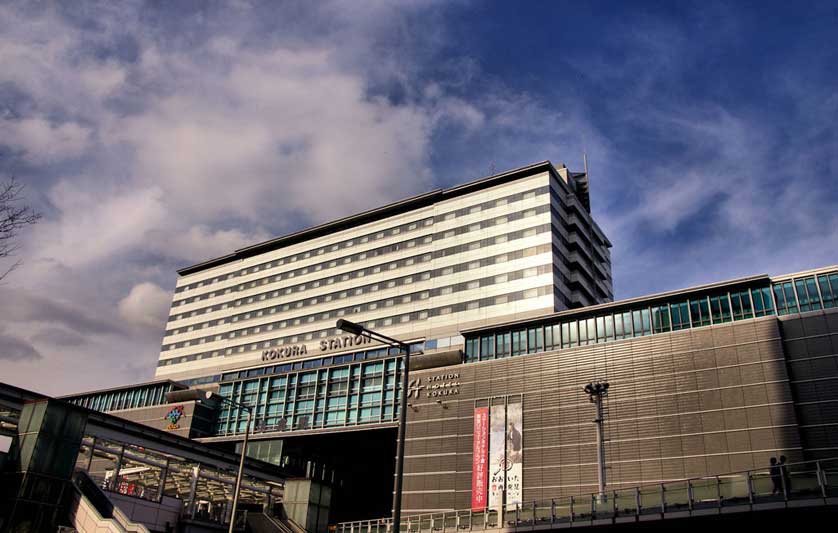
Kokura Station building, Kitakyushu, Kyushu
The legacy of Miyamoto Musashi and his sword school in Kokura
The legendary swordsman Miyamoto Musashi's time in Kokura, though brief, left an indelible mark on the town's history and martial arts tradition. During his stay at Kokura Castle in 1634, Musashi shared his expertise with the local samurai, imparting the techniques and philosophies of his unique Hyoho Niten Ichi-ryu style of swordsmanship.
Musashi's teachings resonated with the warriors of Kokura, and his influence can still be felt in the town's martial arts community today. The Kokura Kita ward is home to the main dojo (honbu) of Musashi's sword school, where dedicated practitioners continue to study and preserve the master's legacy. The dojo not only serves as a training ground for aspiring swordsmen but also as a living testament to Musashi's enduring impact on Japanese martial arts.
Beyond the dojo walls, Musashi's presence can be felt throughout Kokura. A monument erected in his honor stands in Katsuyama Park, near the castle he once called home. This stone memorial serves as a reminder of the town's proud samurai heritage and the legendary swordsman who left his mark on its history. For those seeking to walk in Musashi's footsteps and immerse themselves in the way of the sword, Kokura remains a pilgrimage site, a place where the spirit of the master lives on through the enduring practice of his craft.
